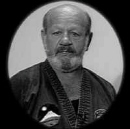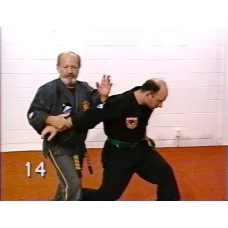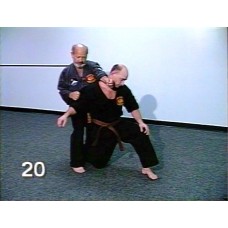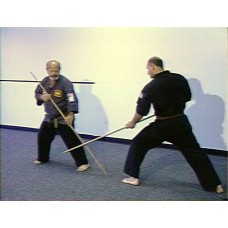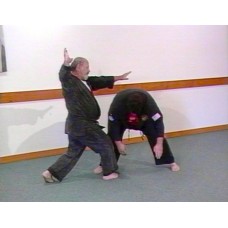KENPO
KENPO means fist "principle," and is sometimes called Chinese boxing or Chinese Karate. It was brought into the open in Hawaii in the 1940's by James Mitose and popularized by the late Professor William K.S. Chow. The art was transplanted to southern California in the late 1950's where its best known exponent was the late Ed Parker.
Kenpo differs from many styles of karate in its preference for circular movement over linear techniques.
| PROFESSOR NICK CERIO (1936-1998) was New England's Kenpo authority. A 10th dan with over 35 years experience, Prof. Cerio studied under both Professor William K.S. Chow and Grandmaster Ed Parker, who awarded him a 9th Dan in Kenpo. He taught for 30 years and has been inducted into the World Martial Arts Hall of Fame and the Inside Kung-Fu magazine Hall of Fame. Prof. Cerio frequently trained law officers. In his youth Cerio initially became interested in boxing as a teenager. Cerio began martial arts training under George McCabe after being exposed to judo in the Air Force. He then studied Karazenpo Go Shinjutsu under George Pesare and received his first black belt in May 1966.[1] Cerio opened his first martial arts school, Cerio’s Academy of Martial Arts. Through his participation in karate tournaments he came in contact with Edmund Parker. They would have a relationship that spanned nearly twenty years. After Cerio met with William Chun, Sr. (Chow’s senior student), he was granted permission to study with Chow. Cerio visited Hawaii for two weeks in the mid to late 1960s to live and study with Chow. In training, Cerio made to assume low, painful stances and throw as much as 500 weighted, full force punches. If he relaxed his stance, more punches were required. Cerio often commented on this period's influence on him and the development of his system, During the late 1960s Cerio studied Hakkoryu Jujutsu, first receiving his brown belt in 1968 from James Benko and later received his 1st black belt (Shodan) from Larry Garron. Cerio studied Okinawan weapons and self-defense under Tadashi Yamashita, who in 1970 awarded him a 4th black belt (Yondan) and in 1973, a 5th black belt (Godan). Cerio studied Sil Lum kung fu under Gan Fong Chin during the early 1970s and Chin awarded him an 8th black belt (Hachidan) and title of Sifu in August 1973. Cerio modified what he had learned from his limited time with Chow, Chun, Sr. Also, from his time with Pesare, and his other teachers mentioned above, and added many things from judo, jujitsu, boxing, kung fu and Shotokan. He added many kata to his system, both open-hand and weapon. Cerio incorporated variations of Shotokan forms into his system. He felt their strong stances and transitions were missing from the kenpo forms that he had been taught. Cerio can be credited with both expanding and helping to popularize kenpo on the east coast, more specifically New England. In 1989 he was given the title of professor by Thomas Burdine and was given the equivalent of his 10th dan again by Burdine but this time representing the World Council of Sokes. He founded a branch of kenpo known as 'Nick Cerio’s Kenpo' which he built up to an organization of more than 65 schools in the United States, Canada, Europe and South Africa. |
KENPO 1 - KENPO HANDS - PROFESSOR NICK CERIO
1401-0 DVD 1 KENPO HANDSCovers basic hand and upper body techniques using all parts of the han..
$19.95 Ex Tax: $19.95
KENPO 2 - ADVANCED KENPO HANDS - PROFESSOR NICK CERIO
1402-0 DVD 2 ADVANCED KENPO HANDSContinues the training by showing the mixture of circular and..
$19.95 Ex Tax: $19.95
KENPO 3 - KENPO BO STAFF - PROFESSOR NICK CERIO
1403-0 DVD 3 KENPO BOTwo different bo kata are taught in this video. Katas show some of the be..
$19.95 Ex Tax: $19.95
KENPO 4 - KENPO HAND CONNECTIONS - PROFESSOR NICK CERIO
1404-0 DVD 4 KENPO HAND CONNECTIONSProfessor Cerio covers the moves and techniques integral to..
$19.95 Ex Tax: $19.95
Showing 1 to 4 of 4 (1 Pages)

